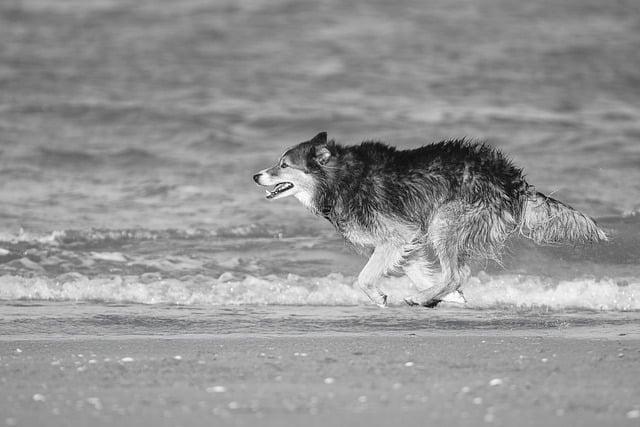Once upon a time in a cozy little house, a curious cat named Whiskers embarked on a culinary adventure. Each morning, he would sniff the air, dreaming of his perfect meal. His owner, Sarah, knew that Whiskers needed a balanced diet. She filled his bowl with high-quality cat food, rich in protein, and added a sprinkle of catnip for fun. Occasionally, she treated him to a few morsels of cooked chicken or fish. Whiskers purred with delight, knowing that each bite was not just tasty but also kept him healthy and strong for his next great adventure.
Table of Contents
- Understanding Feline Nutritional Needs for Optimal Health
- The Role of Protein and Essential Nutrients in a Cats Diet
- Exploring Wet vs. Dry Food: Which is Best for Your Cat?
- Crafting a Balanced Meal Plan: Tips for Feeding Your Feline Friend
- Q&A
Understanding Feline Nutritional Needs for Optimal Health
When it comes to feeding your feline friend, understanding their unique dietary requirements is essential for maintaining their health and vitality. Cats are obligate carnivores, which means their bodies are designed to thrive on a diet primarily composed of animal proteins. This dietary preference is rooted in their evolutionary history, where their ancestors relied on hunting small prey. Therefore, a balanced diet for your cat should include:
- High-quality protein sources: Look for meats like chicken, turkey, or fish as the primary ingredients in their food.
- Essential fatty acids: Omega-3 and Omega-6 fatty acids are crucial for skin and coat health, as well as overall cellular function.
- Vitamins and minerals: Ensure their diet is fortified with essential nutrients such as taurine, vitamins A, D, and E, and minerals like calcium and phosphorus.
In addition to protein, hydration plays a vital role in your cat’s diet. Cats have a low thirst drive and often do not drink enough water, which can lead to urinary tract issues. To combat this, consider incorporating wet food into their daily meals. Wet food not only provides additional moisture but also tends to be more palatable for many cats. When selecting wet food, ensure it contains:
- High moisture content: Aim for a product that contains at least 70-80% moisture.
- Real meat as the first ingredient: Just like dry food, prioritize high-quality protein sources.
- Minimal fillers: Avoid foods with excessive grains or artificial additives.
Portion control is another critical aspect of your cat’s daily nutrition. Overfeeding can lead to obesity, which is a growing concern among domestic cats. It’s essential to follow the feeding guidelines provided on the food packaging and adjust based on your cat’s age, weight, and activity level. Regularly monitor their body condition and consult with your veterinarian to determine the appropriate caloric intake. Additionally, consider the following:
- Frequent small meals: Cats naturally prefer to graze, so offering multiple small meals throughout the day can be beneficial.
- Limit treats: Treats should only make up a small percentage of their daily caloric intake.
- Regular feeding schedule: Establishing a routine can help regulate their appetite and digestion.
The Role of Protein and Essential Nutrients in a Cats Diet
When it comes to feline nutrition, protein stands out as a fundamental building block for a cat’s overall health. Cats are obligate carnivores, meaning their bodies are designed to thrive on a diet rich in animal-based proteins. This macronutrient is essential for maintaining strong muscles, supporting healthy organ function, and promoting a robust immune system. A diet that includes high-quality protein sources, such as chicken, turkey, or fish, ensures that your cat receives the amino acids necessary for optimal growth and development.
In addition to protein, essential nutrients play a crucial role in a cat’s diet. These nutrients, which cannot be synthesized by the body, must be obtained through food. Key essential nutrients for cats include:
- Fatty acids: Omega-3 and Omega-6 fatty acids support skin health, coat shine, and overall cellular function.
- Vitamins: Vitamins A, D, E, and B-complex are vital for various bodily functions, including vision, bone health, and energy metabolism.
- Minerals: Calcium, phosphorus, and potassium are important for bone strength, muscle function, and nerve transmission.
Water is another essential component of a cat’s diet that is often overlooked. While not a nutrient in the traditional sense, hydration is critical for maintaining kidney function and overall health. Cats are naturally inclined to obtain moisture from their prey, so incorporating wet food into their diet can help ensure they stay hydrated. Additionally, always provide fresh, clean water to encourage regular drinking habits.
Balancing protein and essential nutrients is key to crafting a well-rounded diet for your feline friend. It’s important to choose high-quality commercial cat foods or consult with a veterinarian to create a tailored meal plan that meets your cat’s specific needs. By prioritizing these dietary components, you can help your cat lead a healthy, active life filled with vitality and joy.
Exploring Wet vs. Dry Food: Which is Best for Your Cat?
When it comes to feeding your feline friend, the choice between wet and dry food can be a puzzling one. Each type has its own set of advantages and disadvantages that can significantly impact your cat’s health and happiness. Wet food, often seen as a gourmet option, is typically higher in moisture content, which can be beneficial for cats that may not drink enough water. This added hydration can help prevent urinary tract issues and promote overall kidney health.
On the other hand, dry food offers convenience and practicality. It has a longer shelf life and is easier to store, making it a popular choice for busy cat owners. Additionally, dry kibble can help with dental health by reducing plaque and tartar buildup as your cat chews. However, it’s essential to ensure that your cat is drinking enough water if you opt for this type of diet, as the lack of moisture can lead to dehydration.
Another factor to consider is the nutritional content of both wet and dry foods. Wet food often contains higher protein levels and fewer carbohydrates, which aligns more closely with a cat’s natural dietary needs as obligate carnivores. Conversely, some dry foods may contain fillers and artificial ingredients that could detract from their nutritional value. Always check the ingredient list and choose high-quality options that prioritize real meat and essential nutrients.
Ultimately, the best choice may not be a strict adherence to one type over the other. Many cat owners find success in a mixed feeding approach, combining both wet and dry food to provide a balanced diet. This method can offer the benefits of hydration from wet food while also incorporating the dental advantages of dry kibble. Whichever route you choose, it’s crucial to monitor your cat’s health and adjust their diet as needed, ensuring they receive the best nutrition possible.
Crafting a Balanced Meal Plan: Tips for Feeding Your Feline Friend
When it comes to feeding your cat, variety is key to ensuring they receive all the essential nutrients. A well-rounded diet should include a mix of high-quality proteins, healthy fats, and carbohydrates. Consider incorporating the following components into your feline’s daily meals:
- High-Quality Protein: Cats are obligate carnivores, meaning they thrive on animal-based proteins. Look for options like chicken, turkey, fish, or beef in their food.
- Healthy Fats: Fats are crucial for energy and maintaining a healthy coat. Omega-3 and Omega-6 fatty acids, often found in fish oil, can promote skin health and reduce inflammation.
- Carbohydrates: While cats don’t require carbs as a primary energy source, small amounts can be beneficial. Ingredients like sweet potatoes or peas can provide fiber and aid digestion.
Portion control is another vital aspect of a balanced meal plan. Overfeeding can lead to obesity, which is a common issue among indoor cats. To determine the right portion size, consider your cat’s age, weight, and activity level. Most commercial cat foods provide feeding guidelines based on these factors, but it’s always a good idea to consult with your veterinarian for personalized recommendations.
In addition to their main meals, consider offering healthy snacks or treats to keep your cat engaged and satisfied. Opt for options that are low in calories and high in nutrients. Some great choices include:
- Freeze-Dried Meat Treats: These are packed with protein and can be a delightful reward.
- Catnip-Infused Snacks: Many cats enjoy the aroma of catnip, making these treats both enjoyable and stimulating.
- Vegetable Snacks: Small amounts of cooked carrots or green beans can be a fun and healthy addition to their diet.
Lastly, hydration is often overlooked but is essential for your cat’s overall health. Ensure your feline friend has access to fresh water at all times. Some cats prefer running water, so consider investing in a pet water fountain to encourage them to drink more. Additionally, incorporating wet food into their diet can help increase their moisture intake, which is particularly beneficial for cats prone to urinary tract issues.
Q&A
-
What type of food should I feed my cat?
Cats are obligate carnivores, meaning they require a diet high in animal protein. You can choose from:
- Dry kibble: Convenient and helps with dental health.
- Canned wet food: Higher moisture content, beneficial for hydration.
- Raw or homemade diets: Requires careful preparation to ensure nutritional balance.
-
How much should I feed my cat daily?
The amount varies based on your cat’s age, weight, and activity level. Generally:
- Adult cats: 20 calories per pound of body weight.
- Kittens: Up to 30 calories per pound, as they need more energy for growth.
- Consult your vet for personalized recommendations.
-
Can I feed my cat human food?
Some human foods are safe in moderation, such as:
- Cooked chicken or turkey: A great protein source.
- Fish: Like salmon or tuna, but in limited amounts.
- Vegetables: Such as peas or carrots, but not all cats will enjoy them.
Always avoid toxic foods like onions, garlic, and chocolate.
-
Should I provide fresh water daily?
Absolutely! Fresh water is essential for your cat’s health. Ensure:
- Water is changed daily.
- A clean bowl is used to prevent bacteria.
- Consider a cat water fountain to encourage drinking.
a balanced diet is essential for your feline friend’s health and happiness. By understanding their nutritional needs and providing a variety of quality foods, you can ensure your cat thrives, purring contentedly by your side.




